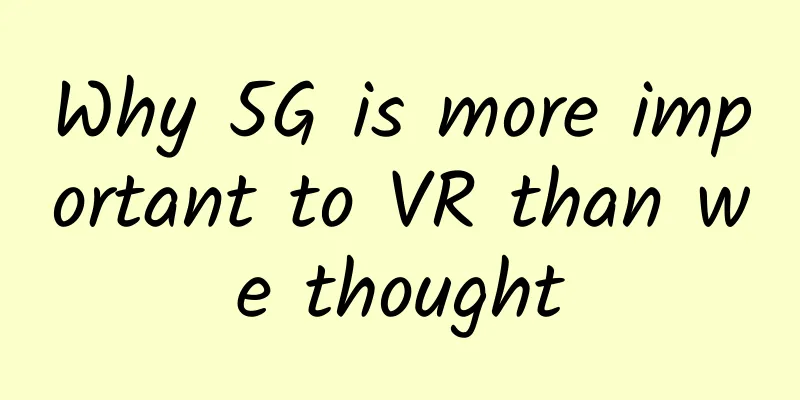Why 5G is more important to VR than we thought

|
What’s currently limiting widespread adoption of virtual reality (VR) isn’t just cost, content or the quality of the headsets. At its core: The industry has problems packing enough computing power into headsets to make the technology easy to use. Today, high-end VR systems require a headset connected to a computer with an expensive graphics card (usually from Nvidia) and trackers strategically placed around the room. All of this technology and the space required combine to create cost, content, and quality barriers for the industry.
Some of those barriers are falling away. Inside-out tracking (which eliminates external trackers) exists, but it only works with headsets that don’t need to be connected to a computer. And a headset without a computer connection can’t cope with modern graphics cards. Those cards are too big, use too much power, and can overheat a person’s head. Overcoming this challenge is what’s really holding back VR. But the answer may be here sooner than we think. Cloud computing in VR The key to VR is gaining the ability to move graphics cards and computer chips to the cloud, and connect to them wirelessly. This way people no longer need wires to connect to their computers; trackers can be moved to headsets; and the weight and cost of headsets will drop significantly. What the cloud needs is a superfast connection to the graphics chip, without compromising the VR experience. So, what we need is... 5G. Slowly but surely, the major telecom operators (such as Verizon, AT&T, and T-Mobile, as well as Huawei) are building out 5G networks, which will provide the speeds needed for cloud-based VR. From then on, the industry must build the technology to take advantage of that speed. Some companies are already preparing to send some computing power to the cloud. Qualcomm recently unveiled an XR platform built specifically for mobile devices (“XR” — extended reality — includes virtual reality, augmented reality, and everything in between). It’s developed an XR viewer, including the Snapdragon 855, that smartphone makers can use to connect new headsets — a concept very similar to the one behind the HTC Cosmos. HTC says the Cosmos can be tethered to a traditional VR computer or to a smartphone, effectively turning it into a wireless device. Based on the Qualcomm Snapdragon 855 platform is HTC's 5G hub, which could be the core of the latter's VR products. Up to 20 devices can connect to the hub, supporting low-latency VR. Opening up VR to new players As 5G becomes part of the VR industry, we'll likely see more headset manufacturers enter the industry. Currently, HTC and Facebook's Oculus dominate the market, with Sony's Playstation and Microsoft's mixed reality offerings of lower quality, but also lower costs. They have created software platforms that connect to their headsets, giving them some control over the ecosystem. 5G will move the ecosystem to the cloud, making the headset itself a commodity. In the future, headsets may not need to be connected to a specific physical platform; they can be directly connected to the cloud XR platform, and the headset is a content delivery device. This will provide the industry with more types of headsets and cloud-based content distribution models. VR is changing We don’t know how 5G will change VR and AR, but we know it will change them. Soon, high-powered computers and graphics cards will be a thing of the past, and all users will need is a fast internet connection to render high-quality VR and AR content. Companies like Qualcomm and HTC are already building 5G technology for the industry, and before we know it, we may already have cloud connectivity with our headsets. |
<<: AR glasses want to completely break up with iPhone! Apple: I can't do that
>>: Apple releases fifth developer beta of iOS 12.2
Recommend
How to improve the click-through rate of Guangdiantong ads? A few simple tips to teach you how to apply what you have learned.
When it comes to optimizing click-through rate , ...
When the sun dies, will new life appear in the universe? | Tutu Science Fiction
Vocabulary Nuclear fusion Swell Degenerate state ...
Comic: Human Code Evolution Illustrated Book
Reviewer: Luo Huiqian, Associate Researcher, Inst...
Truck fires have occurred in many places. Be sure to pay attention to these signs before a truck catches fire!
Recently, as the temperature has been rising, a n...
Is it safe to eat the Basa fish that costs only a few dollars a bag in the supermarket?
Have you noticed that restaurants love to use Bas...
The new mobile app rankings for 2020 are released
The number of mobile Internet users this month re...
The love-hate relationship between development and testing
[[228041]] IT practitioners are always in dire st...
China Center for Disease Control and Prevention: From 1990 to 2019, the mortality rate of Chinese residents due to excessive intake of sugary drinks increased by 35%
Do you usually drink milk tea or other beverages?...
Tik Tok trending searches challenge Weibo's "advertising board"
Tik Tok’s trending searches are becoming more and...
Microsoft optimizes Teams Shifts app to send shift notifications to designated employees
On August 8, Microsoft officially released a blog...
Antioxidant King! People who often eat these 6 types of food really age slowly
Planning丨Zhong Yanping Visual丨Zhu Hangyue Design丨...
How to operate and promote APP? Familiarize yourself with these 4 points first!
The four most important points in APP operation a...
The new energy vehicle market has entered a brutal reshuffle period. Who among the new forces will leave the market in disgrace?
Do you still remember Boss Jia who said he would ...
How much does it cost to be an agent for a chemical mini program in Anshan?
What is the price of Anshan Chemical Mini Program...
Do you prefer strong or weak cooling when taking the subway?
Against the backdrop of rapid development of mode...









